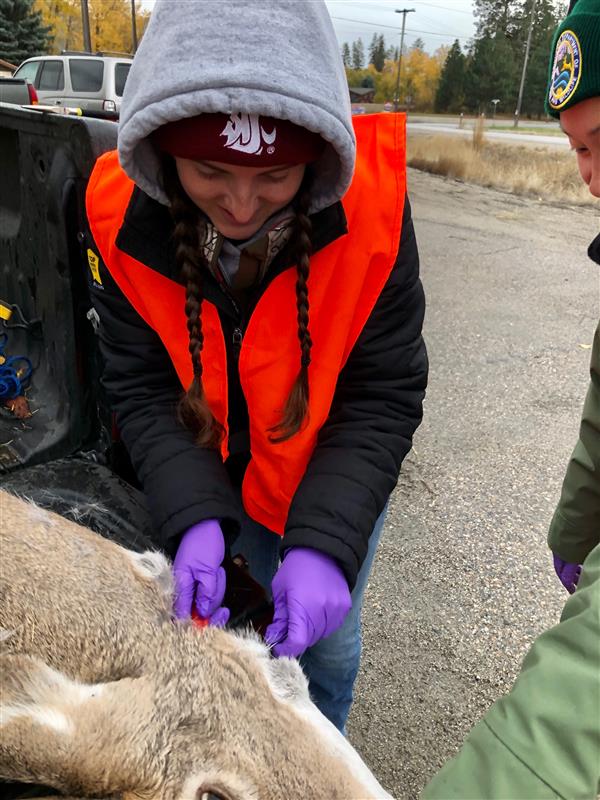
CWD Testing Finds 15 More Idaho Cases In 2022, All In Same Area
THE FOLLOWING IS A PRESS RELEASE FROM THE IDAHO DEPARTMENT OF FISH AND GAME
With nearly all results back from 2022 chronic wasting disease testing, Fish and Game found 15 positive cases out of 3,171 tests statewide. All CWD cases from 2022 were detected in a 6-mile radius within the Slate Creek drainage north of Riggins and east of U.S. 95 where the disease was first detected in fall of 2021.

“The presence of CWD in Idaho is unfortunate, but we were fortunate to detect it early, and extensive testing in areas adjacent to Slate Creek in 2022 showed no positive cases outside the immediate area,” said Rick Ward, Fish and Game State Wildlife Manager. “We will continue monitoring this area carefully, and we are planning more management actions in the Slate Creek area to reduce deer densities and attempt to prevent CWD from spreading.”
CWD is a contagious and fatal neurological disease that affects deer, elk, and moose. There is no cure, vaccination, or efficient and reliable CWD test for live, wild animals. The disease persists in the environment and cannot effectively be removed. If left unchecked, CWD poses a risk to deer and elk herds and long-term hunting opportunities.
In 2021, the Idaho Fish and Game Commission established a CWD Management Zone in Hunting Units 14 and 15 where CWD testing is mandatory, and in 2022, Fish and Game staff collected 1,291 CWD samples from those units. The 15 positive cases included 10 white-tailed deer and three mule deer harvested by hunters, and two whitetails found dead. Fish and Game staff continues to collect samples on deer, elk or moose that are found dead.
Fish and Game biologists estimate that the CWD prevalence rate in Unit 14, which is the percentage of animals in a given area suspected to have the disease, is 1.2 percent in mule deer and 3.3 percent in whitetails, or 2.4 percent for both species combined. However, biologists estimate that prevalence rates could be as high as 10 percent within 6 miles of Slate Creek.
Fish and Game’s CWD management strategy calls for keeping the prevalence rate below 2 percent in an attempt to prevent spread and minimize its impact on nearby deer and elk herds. Finding CWD early and limited to a small area, and reducing deer herds in that area, can help manage the disease.
“As far as we know, we’re the first state to detect CWD early enough to identify a focal point in such a relatively small, confined area,” Ward said. “By acting quickly, we have the opportunity to manage it on a small, localized scale.”
That management will include reducing deer densities in and around the Slate Creek area through hunting and other methods, and keeping deer densities at lower levels in the future.
Detailed plans are currently being developed. Fish and Game staff is working closely with landowners in the area and will be considering multiple approaches to reducing deer numbers this winter.
“This is a difficult decision that we don’t take lightly, and we do it in consultation with hunters, landowners, outfitters and the general public,” Ward said. “We have to take action to prevent the spread of this disease that has affected long-term hunting opportunities in other states, and we don’t want that to happen in Idaho.”
